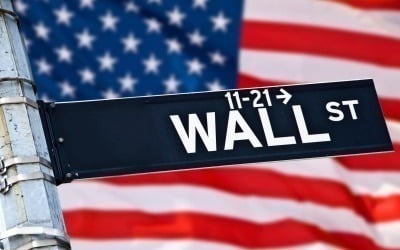[김현석의 월스트리트나우] "투자는 계속하되 위험을 바짝 경계해야"
-
기사 스크랩
-
공유
-
댓글
-
클린뷰
-
프린트
![[김현석의 월스트리트나우] "투자는 계속하되 위험을 바짝 경계해야"](https://img.hankyung.com/photo/201901/AB.18753686.1.jpg)
한국에도 가끔 가서 콘퍼런스 기조연설도 하시고 그럽니다. 이 분에게 한국경제신문이 <세계의 창> 칼럼 코너를 통해 정기적으로 기고를 받습니다.
이번 기고(22일자)를 보니 현재 뉴욕 시장 상황과 투자자들의 생각을 잘 정리한 듯 해 공유합니다. 영어 원본을 부칩니다.
한글 번역본은 여기를 참조하시면 됩니다 - http://news.hankyung.com/article/2019012162551
< Stay invested, but be vigilant >
By Jae Yoon
2018 was a year of divergence. Economic and business performance were robust, global growth was above trend, and the U.S. economy outperformed. Earnings growth, boosted by tax reform, was also high. Fiscal stimulus in the U.S. supported strong consumer and business activity. But these solid economic fundamentals were met with poor market performance, particularly in the fourth quarter.
The elephant in the room is volatility. Volatility increased from cyclical lows in 2017 to a “standard” level in 2018. However, the real surprise was not volatility itself but the climactic, liquidity-driven drawdown into December.
If economic growth is supposed to be robust, why are we seeing this level of drawdown?
To begin, earnings and economic growth are indeed growing, but they have likely peaked. In this environment, investors tend to be skittish and overreact to news headlines and data releases.
The dynamic is exacerbated by the build-up of geopolitical risk and political uncertainty—making it difficult for businesses and investors to make concrete plans.
Finally, with the highly anticipated unwind of quantitative easing in the U.S., liquidity is becoming an issue. The Fed has become a net seller of securities, without any natural buyers. Add these factors together and you get a negative market dynamic despite strong economic fundamentals.
Volatility is typically perceived as negative. With all the pessimism in the market, it is important to remember that volatility goes both ways. For instance. with drawdowns at the end of 2018, we see less likelihood of heavy downside volatility and opportunity for capturing upside.
Four factors contribute to potential upside this year and, in an optimistic scenario, could load the bases for a market grand slam:
1. First base - Real interest rates are near zero.
2. Second base - Sentiment is protracted, meaning a lot of cash is on hand. The American Association of Individual Investors found that 50% of investors are bearish, the most since 2013.
3. Third base - Valuations are low. Forward price/earnings ratios on the S&P 500 are low relative to their historical averages, and global markets are even cheaper. Unless we recession – which we don’t – this indicates room for multiple expansion.
4. Grand slam – The Federal Reserve is moving towards a more dovish posture, removing one of the key risks that weighed on sentiment in 2018. As investor fears on this and some key geopolitical risks alleviate, we could be looking at a double-digit market return for U.S. equity this year.
The prolonged bull market may have paused to rest, but it is far from exhausted. Both fundamentals and valuations provide a good backdrop for risk assets in 2019.
Stay invested. The economic expansion remains on track. After significant drawdowns in 2018 we believe that there are opportunities across asset classes, and we are working with our investors to identify good positioning and solutions.
In our portfolios, we prefer equities, with a few careful plays in fixed income. The idea is to maintain the risk-on stance of our portfolios but consider diversification and resilience in this late-cycle environment.
뉴욕=김현석 특파원 realist@hankyung.com


![[김현석의 월스트리트나우] '2월17일' 트럼프는 다시 시장을 흔들까](https://img.hankyung.com/photo/201901/AB.18714825.3.jpg)